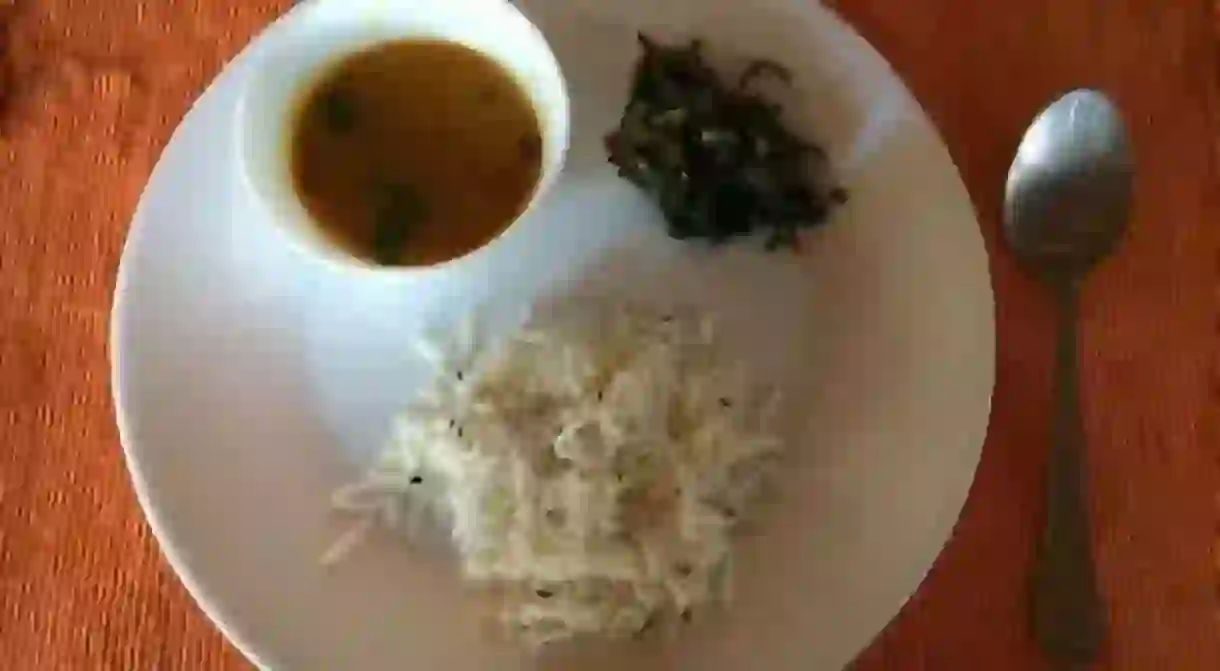Jilling Terraces, Exploring Kumaoni Cuisine At Its Best

A trip to Jilling Terraces involves an 18-hour train journey, an overnight bus to a town in Uttarakhand called Kathgodam, and a cab ride to the bottom of the hill at Matial, where one begins a steep ascent up to the property. Needless to say, the idea of a 100 year-old colonial house somewhere in the mountains of India sounds amazing. But like most good things, the place needs to be experienced first-hand to truly appreciate it.

The homestay/hotel, owned by Sheela and Rajeev Lunkad, is gorgeous and looks like the home one always dreams of having. From the wonderful staff to the cozy dining area with fireplaces and books for company, everything contributes to making it feel like home. And let’s not even get started on how perfect the rooms are, with the Kanchenjunga Range outside and the electric heaters in the bed that make it impossible to leave.

The focus of this piece, however, is not the place itself or its warm hospitality. The food at Jilling, including the numerous cups of aromatic adrak chai, the rhododendron juice they served, the delicious baingan bharta served with gehu ka roti, can make anyone feel sated for months. Nutritious, fresh, and delicious, each flavour explodes in the mouth, and if one hangs around in the kitchen long enough, there’s plenty of stories to write home about after talking to Basant, the cook, who is always humming, and Bimla di, the ever-smiling caretaker.

One of the most amazing things about the food and overall eco-system at Jilling is the fact that all the vegetables and fruits are sourced from local farmers. Basant Varma, who hails from Jeolikot, learnt most of his cooking during the three years he worked and learnt in the kitchen at Amrapali Institute in Haldwani. ‘I got into cooking because, as a kid, I’d go to restaurants and love the experience. I always knew that I wanted to make people happy with food,’ he shares.

In the nearby villages of Panyali and Kanarkha, the farmers grow aubergine, okra, peas, cauliflower, cabbage, onion, garlic, potatoes, coriander, radish, lemons, capsicum, beans, etc. In fruits, they grow apples, plums, peaches, apricots, chestnuts, etc. ‘What is special is that everything is healthy and organic. In cities, everything is grown using pesticides and fertilisers but we don’t use any chemicals here and it’s much safer to eat,’ adds Basant.
As he cooks a large pot of pahari dal, he talks about the local cuisine in the Kumaon region, which is comprised of dishes like Bhatt ki churdkani made from bhatt dal (black bean), kadhi chawal, Aloo ka Thichwa (a Garhawali potato curry which is prepared crushing potatoes and then cooked with spices), halwa, dal baati, and sarson ka saag. A variety of rotis are also made – like makka ki roti, chestnut paratha, gehu ka roti, and more.

As he rightly explains, the food of the region is a reflection of the land and people, and is characterised by the local ingredients at their disposal, simplicity, and above all, freshness.
This is why almost all the masalas (spices) used in the cooking are made fresh. The dalchini (cinnamon) comes from the tej patta tree, red chili powder is made by grinding spicy, homegrown chilies, raw haldi (turmeric) boiled, dried, and crushed for the powder, and even kali mirch powder (pepper), dhaniya (coriander) powder, and jeera powder (cumin) is as authentic as it gets. There are also plans of growing herbs like basil and oregano in the near future.
But, of course, the local food isn’t all that Jilling offers. He also makes some ‘fancy items – pizza, pasta, momos, chowmein, fried rice, Manchurian, cutlet, chili chicken, chili paneer, soup, thukpa, bread rolls. For chaat lovers, there’s quite a few options, too, including paneer chaat, aloo chaat, chestnut chaat, and peanut masala, all of which use the humongous and extremely tasty limes grown locally.

‘People who come here usually like the local food. The fancy food is mostly for their kids. We customise food as per what they want. For example, we had a foreign couple here, and I made everything they wanted. They usually ate Continental food but I also made them try idli sambar, which they enjoyed!’ shares Basant.
With food being merely a form of sustenance, whatever is consumed is wholesome, organically grown, and therefore healthy. Adding this to point, Basant talks about what the villagers tend to eat, and says, ‘We eat most of these simple dishes at our homes too. But say, when we cook chicken at home, we don’t put so much cream and spices. We just add masala and it’s done, like the dal I make. We usually eat vegetarian food, but we end up eating either mutton or chicken once or twice a week.’
But what’s so special about the food, according to him, I ask. ‘Pasta, pizza, har cheej toh market mein milegi. Par jo yahan pahari khana milegi, woh aur kahin nahin milegi (You can get pasta, pizza and such things in any market. But the local food you here here, you won’t get it anywhere else),’ he wraps up. We were able to bring you one secret recipe from this Kumaoni kitchen!














